ONE of the most fascinating and conspicuous parasitic plants is the Love Vine, Cassytha filiformis. A relative of Avocados (Lauraceae family), this vine with minute white flowers and greenish fruits form conspicuous dense masses of yellowish-green stems that can cover bushes and even entire trees!
At first glance, Love Vines can resemble Dodders (genus Cuscuta in family Convolvulaceae), and in some places, they are called Dodder Laurels. But both parasitic vines can be distinguished by reproductive and even vegetative features such as the color of their stems. Love Vines tend to have young stems dull orange or orange-yellowish and covered with minute “hairs”, turning green as they age. In contrast, Dodders have bright smooth yellow stems turning bright orange. Also, the stems of Love Vines are sturdy, contrasting with the typically brittle (easily broken) Dodder stems.
There are numerous species of Love Vines and Dodders around the world, and the general distinctions I mention below might not apply to all of them. But at least they can help separate the species found in the Caribbean region.
General characteristics to help distinguish Love Vines (Cassytha) from Dodders (Cuscuta) include:
Unlike some other parasitic plants, Love Vines do not seems to discriminate between the plants it parasitize. In fact, a single adult individual has the potential to obtain water and nutrients from many different host species, including trees, shrubs, and vines.
In fact, I have seen Love Vines “feeding” on their own cousins, the Avocado trees, and even other parasitic plants such as Mistletoes!
The picture below shows a Love Vine wrapping tightly a Croton (Euphorbiaceae) shrub in Providenciales Island, Turks & Caicos.
Love Vines are interesting at the molecular level because their parasitic lifestyle can lead to unusual genomic changes. Current and future studies will tell us more about the fascinating biology and genome evolution of these intriguing plants.
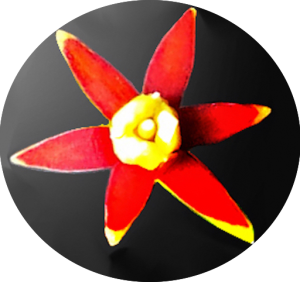
 Copyright protected by Digiprove © 2021 Marcos Caraballo
Copyright protected by Digiprove © 2021 Marcos Caraballo
4
1
vote
Article Rating
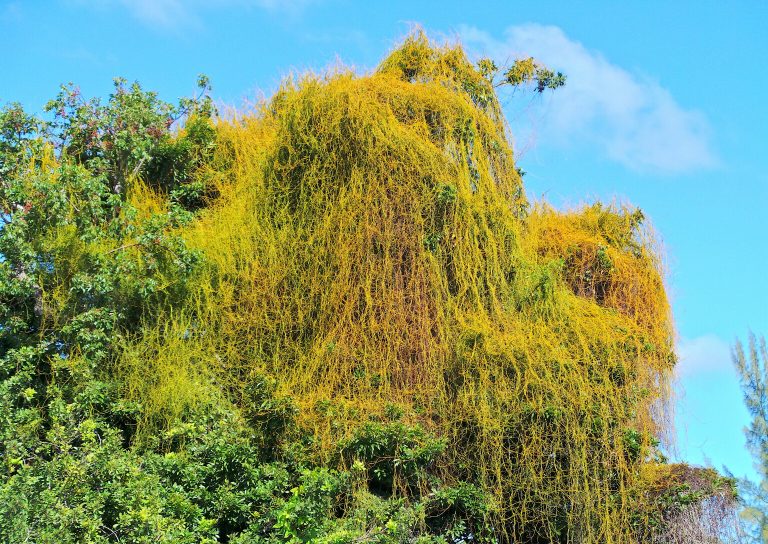
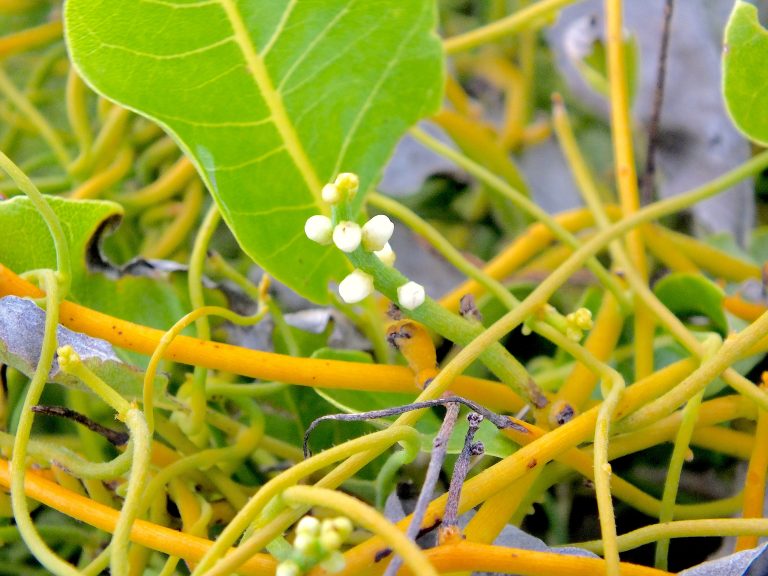
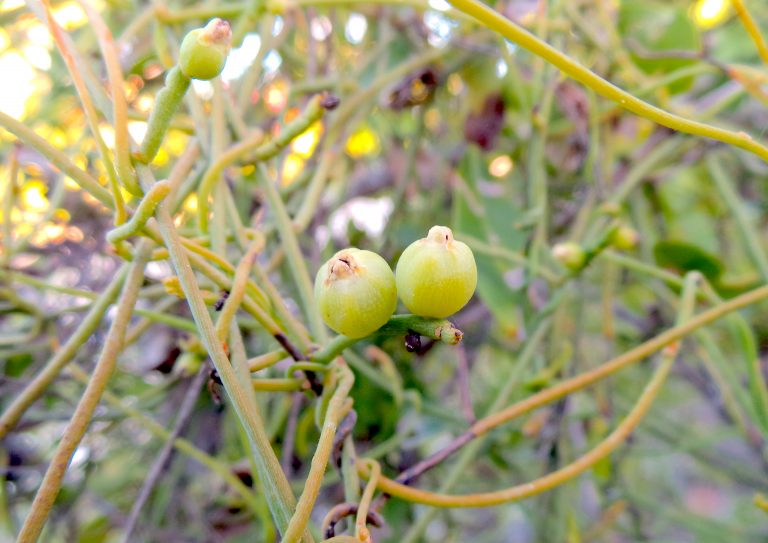
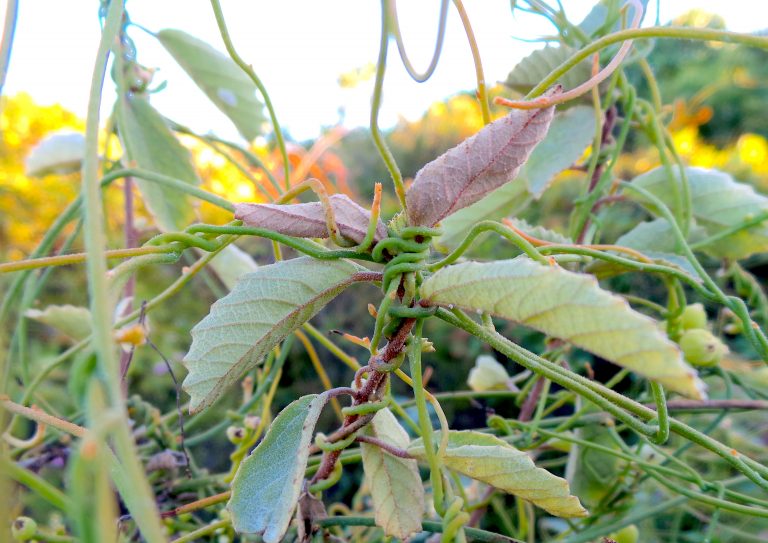
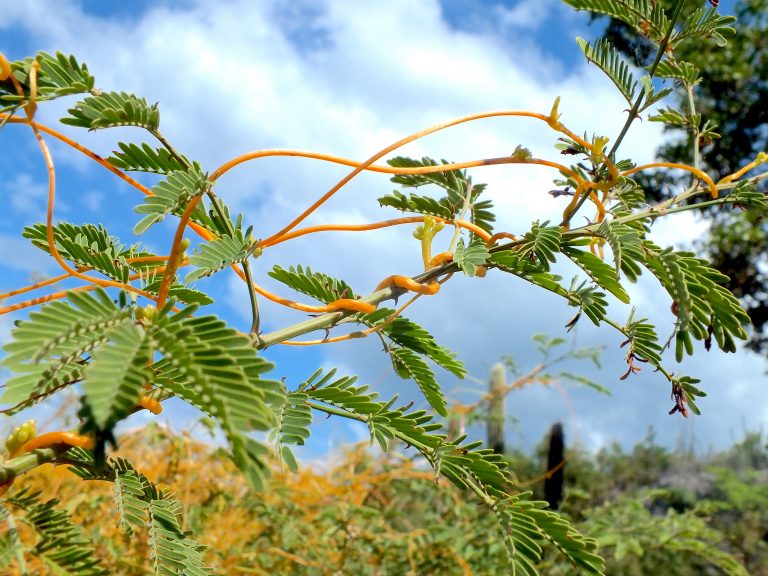
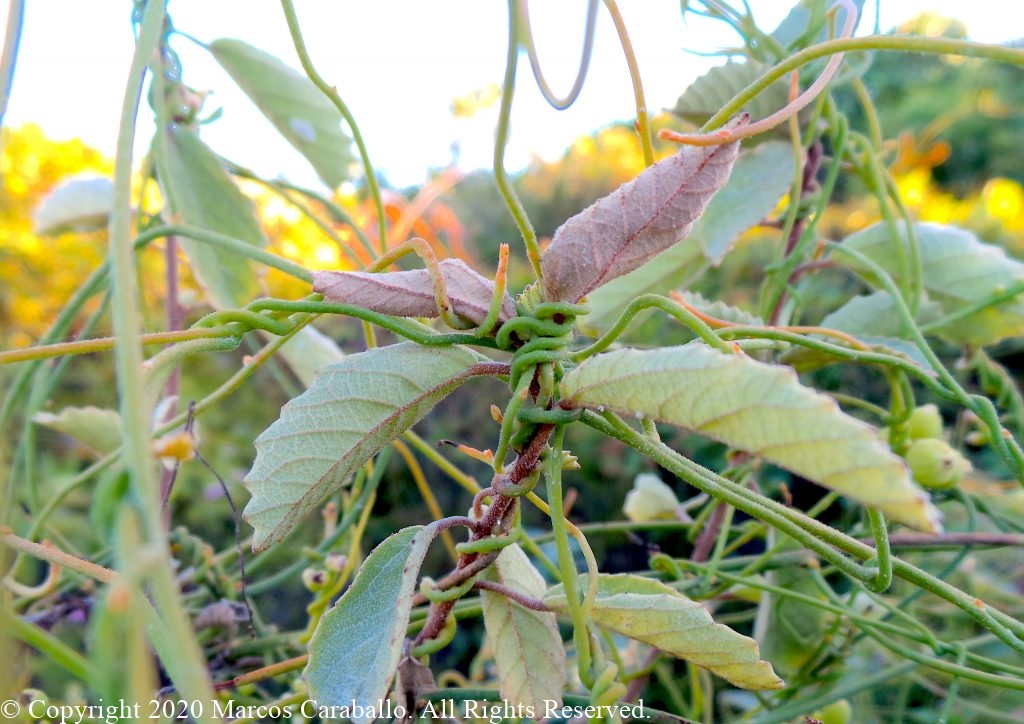
[…] Visit my post on Love Vines for pictures and more information on how to separate them from Dodders. […]